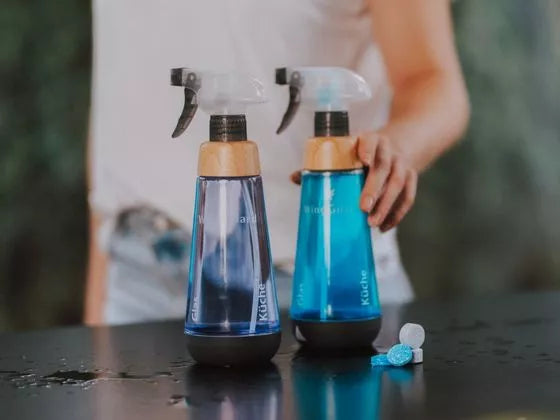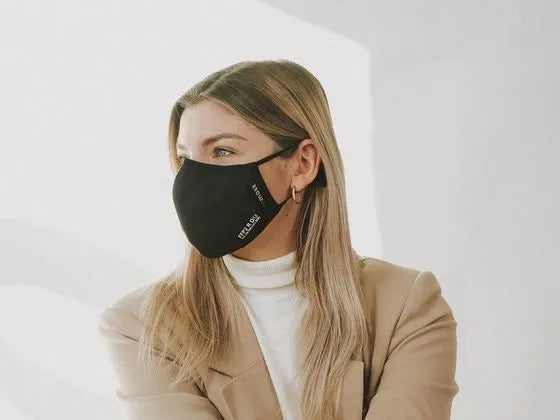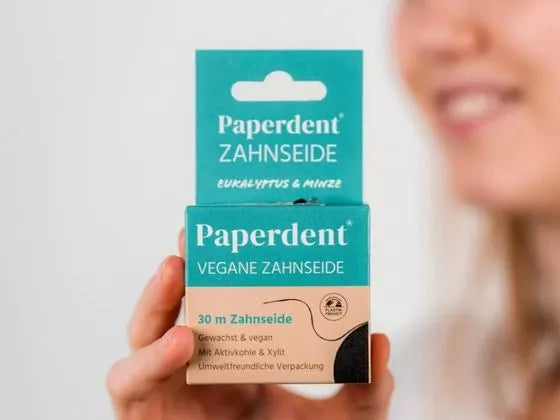You should wash your hands thoroughly before putting on and after taking off the mask. When wearing the mask, make sure that it closes well on the sides and that the nose clip fits snugly against the nose. Please note that if you wear a beard, the mask may not fit snugly, which can affect the filter performance. That's why we recommend shaving it off.
Since FFP2 masks are not medical products, but are actually intended for occupational safety, no specific recommendation can be given for the wearing time. As part of occupational safety, it is recommended to close the mask after a work shift
change and, if possible, take several rest breaks. In private use, however, it can be assumed that FFP2 masks are used for short periods of time, such as when shopping or on public transport, so that it is difficult to determine exact wearing intervals. We therefore recommend washing the REMASK mask after 6-8 hours of use at the latest.
Make sure that the mask does not get wet when you wear it and that it does not get wet after
washing is completely dry before you use it again.
To reuse the REMASK PRO 2.0 mask, we recommend washing the mask by hand once a week, depending on how long it has been used.
First, put the mask in a sink with cold to lukewarm water. Swing the mask back and forth in the water 3-5 times. Then you can hang them up to dry. When washing, avoid rubbing and wringing the mask so you don't damage the internal filter. The mask should therefore not be washed in the washing machine. Change the mask after 20 washes. We recommend washing the mask at least once a week (depending on usage).
Face masks are generally disposed of in the residual waste bin. Since used masks are potentially contaminated material, you should pack the mask again in a separate bag beforehand and then put it in the residual waste bin.
If the specified storage conditions are observed, the masks have a shelf life of 3 years from the date of manufacture.
Storage conditions: storage humidity
< 80% storage temperature: -20℃ to +50℃
FFP2 = filter performance (filtration of at least 94% of the particles in the air)
R = reusable
D = dolomite dust test
Respirators are originally intended for occupational safety and are not intended for medical use. For this reason, FFP2 masks are part of personal protective equipment and not medical devices. That is why the note "not medical" is given.
Unfortunately, we can't give a very clear answer here, because you can't compare the two masks directly. The comparison is so difficult because the test standards for FFP2 and medical (surgical) masks are very different. The background is that FFP2 masks were originally intended for occupational safety, for example to protect against fine dust during manual work. For this reason, only particle filtration is examined here. In the case of medical masks, on the other hand, bacterial filtration is being examined. However, since the particle sizes examined for FFP2 masks are smaller than a bacterium, it is generally assumed that the filter efficiency of FFP2 is somewhat higher. However, the Livinguard PRO mask cannot be compared so easily with a normal surgical mask, as it seals much more tightly and cleans itself thanks to the innovative Livinguard textile. This reduces cross-contamination as well as breathing air bypassing the mask. There is significantly higher protection here than with a normal surgical mask.
The REMASK PRO 2.0 mask is an FFP2 RD mask, which means that it has been approved as a reusable FFP2 mask. In contrast, the Livinguard PRO mask is certified as a medical mask (commonly known as a surgical mask). The Livinguard PRO mask is equipped with the innovative Livinguard technology, the REMASK PRO 2.0 mask does not have this technology.
Do you have any questions?
...then write to us!





